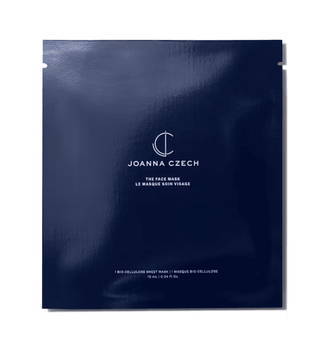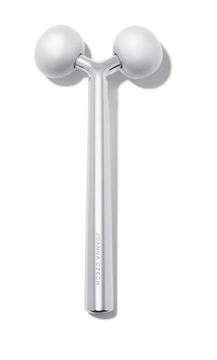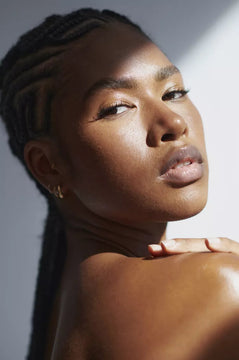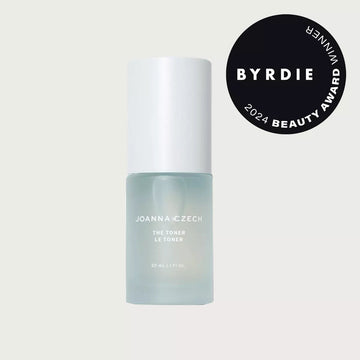A Guide to Skin Care for Women Over 50, According to Industry Pros

Whether you’re a skin-care minimalist or maximalist, your regimen is likely to change over the long term as you tailor it to your needs. By nature of time and gravity, the markers of aging—deep wrinkles, sun spots, crepe-y texture, and loss of volume—present themselves most conspicuously mid-life onward, which is why many women look to to overhaul their above-neck routines come 50. From the best way to reduce the appearance of wrinkles to most robust brightening and resurfacing masks, here skin-care pros share the best strategies and ways to build your arsenal for an ageless complexion.
Cleanse and, Yes, Tone
For daily face-washing, mature skin should be treated with a mild, non-irritating cleanser that won’t strip the skin of its natural oils or irritate dry and sensitive skin. For those with dryer skin, New York dermatologist Patricia Wexler, M.D., cautions that because it’s usually sensitive, it’s best to use a cleanser that provides a good barrier protection with skin-protective ingredients like ceramides. “After an initial oil cleanser to remove my makeup, I use a cream cleanser, then use a lukewarm water to rinse, and pat my skin dry with a soft cloth,” Wexler explains. To help maintain the pH balance of the skin after cleansing, celebrity facialist Joanna Czech recommends using a toner, which can also supply an extra layer of moisture and “act as carrier” for the skin-care steps that come next.
Exfoliate—But Don’t Overdo It
In terms of exfoliation, both physical (scrubs) and chemical (AHAs and BHAs) may be used on mature skin—but proceed with caution. “Yes exfoliation is necessary, but don’t overdo it,” Czech instructs. “With women over 50, the outer layer of skin becomes thinner and more delicate.” To avoid aggravation, Czech recommends taking a minimal approach to physical exfoliation, which can cause micro tears on the epidermis if you get carried away. To buff away dead skin cells safely, Wexler recommends using a gentle scrub, such as Tata Harper’s Regenerating Exfoliating Cleanser with its apricot microspheres, no more than three times a week, and following it up with a calming elixir with soothing ingredients such as ceramide and chamomile. For mild chemical exfoliation, try M-61’s Powerglow Peel squares, which are presoaked with glycolic and salicylic acids, as well as acne-scar-healing vitamin K and skin-tone-evening bilberry extract, and are gentle enough for daily use. Or, consider a weekly peel treatment like Drunk Elephant’s resurfacing T.L.C. Sukari Babyfacial, which is formulated with 25% AHAs with its blend of glycolic, tartaric, lactic, and citric acids.
Give Yourself a Facial Massage
A daily facial massage does wonders for the skin at any age, but is especially transformative for mature complexions. It works to sculpt the facial muscles (think: more defined cheekbones and jawline) and reduce fluid buildup, as well as improve blood flow, cell turnover, tissue toning, and boost collagen production. “Collagen is the support net of our skin—it’s what gives the structural integrity of the skin and as it declines, skin becomes looser, sags and wrinkles form,” explains Rochelle Weitzner, founder and CEO of Pause Skincare, a line developed for women going through menopause. Because women experience a dramatic reduction in collagen synthesis after menopause, Weitzner designed a special tool to stimulate fibroblasts, which are the cells that produce collagen. Using your fingertips or a tool, such as Pause’s Fascia Stimulating Tool, knead and contour the facial muscles, moving along the jawline and upward toward the highs of the cheekbones, under-eye region, and across the forehead. For an extra boost at the end, wrap gauze around ice cubes infused with anti-inflammatory green or chamomile tea, then glide them over the skin, says Czech.
Restore Volume Loss With Extra Moisture
Starting in your 30s and 40s, hyaluronic levels begin to decrease, which is what makes fine line and deep wrinkles more noticeable. When applied topically, hyaluronic acid can help replenish and retain cell moisture (it holds 1,000 times its weight in water), which is why it’s such a common ingredient in both serums and moisturizers—particularly in formulas targeting mature skin. “Serums are higher concentrations of ingredients than we are using in creams or lotions,” explains Wexler, who is a fan of SkinMedica’s HA5 Rejuvenating Hydrator. “It not only delivers hyaluronic acids to the dermis, [but] its complex chains of different hyaluronic acids stimulate production of your own hyaluronic acid, increasing the resilience of your own skin,” she explains of the creamy serum. To seal in a supercharged serum, look to a moisturizer laced with ingredients that will help mimic and help restore the skin barrier, such as Kate Somerville’s new DeliKate Recovery Cream, which combines ceramides and a special peptide complex to calm irritation and minimize redness.
Treat Wrinkles and Hyperpigmentation Carefully
For wrinkles, hyperpigmentation, and invisible photodamage, Wexler recommends looking to retinol, a derivative of vitamin A that when applied topically, promotes skin renewal, brightens skin tone, clearing up hyperpigmentation, and aids in production of collagen. It is available both in prescription strength and over-the-counter, and it’s best to consult your dermatologist to advise on the right potency and best retinoid type to use. Wexler also notes that retinol can be especially beneficial in tending to eye-area concerns, working in combination with peptides to stimulate new collagen, and in turn, support the laxity of the tissue, she says. To address puffiness and bags, Wexler recommends an eye cream with caffeine (such as Estée Lauder’s hyaluronic acid-filled Advanced Night Repair Eye), cucumber, or yeast extract to “deflate and dehydrate the fat cells,” and haloxyl to address pigmentation.



